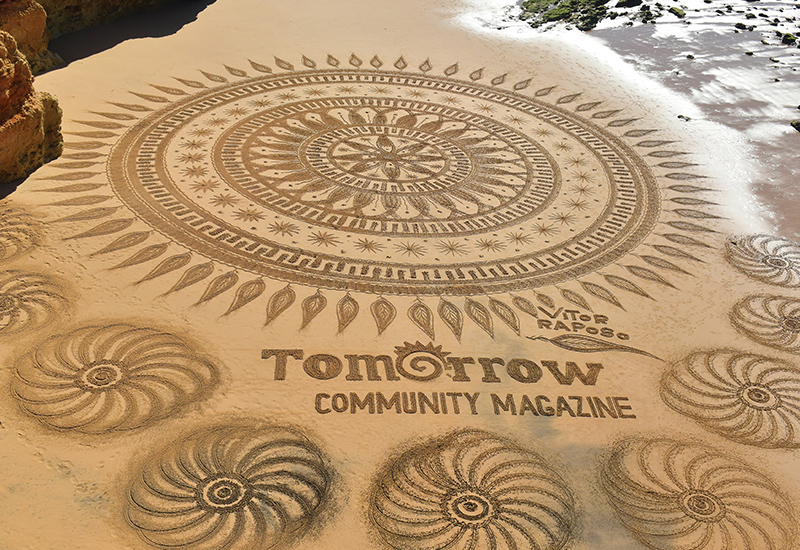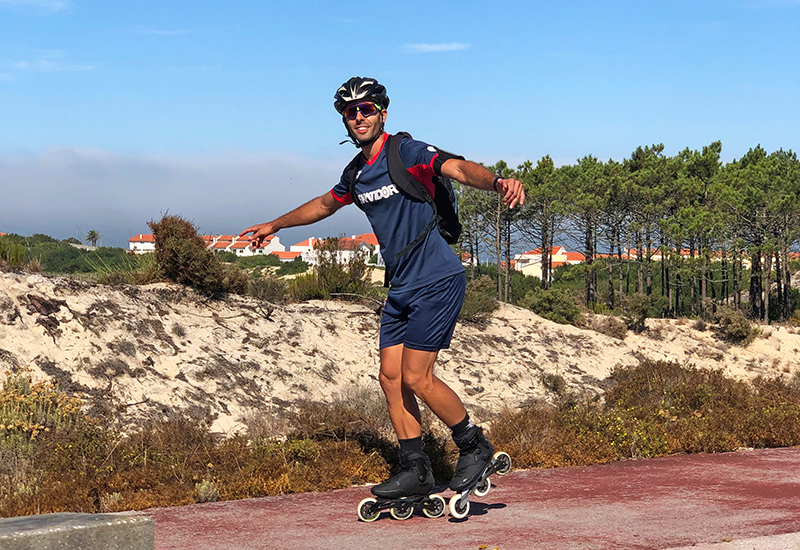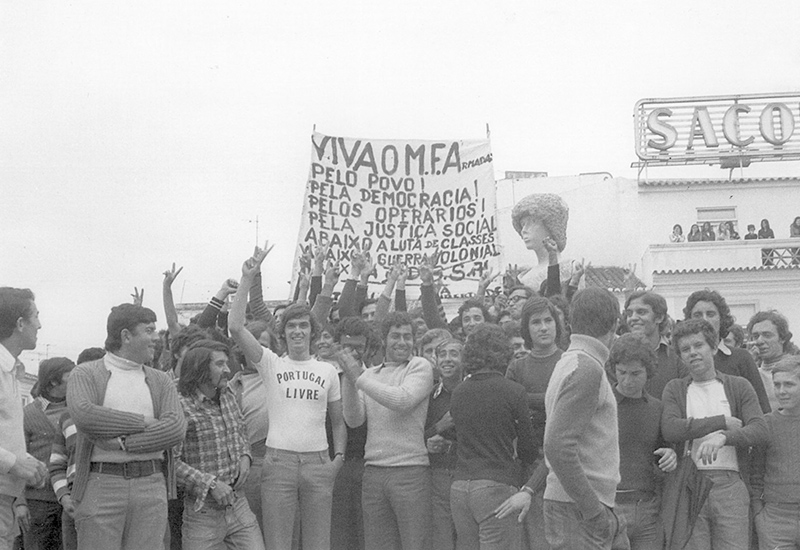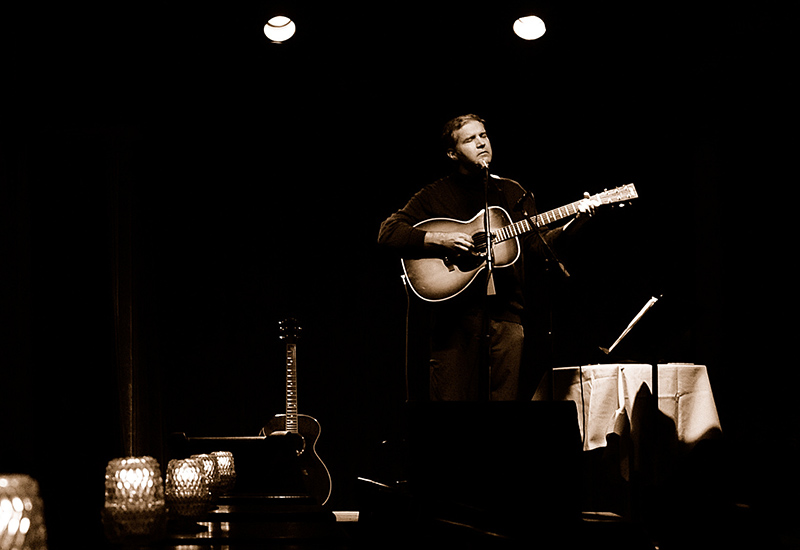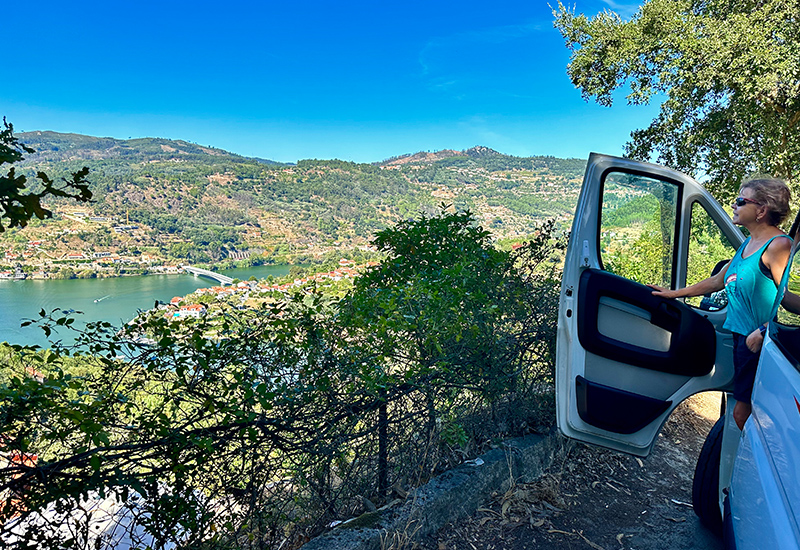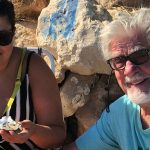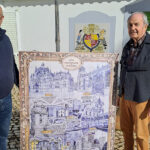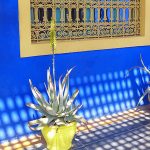Vitor Raposo – Art to be erased by the sea
WORDS & PHOTOGRAPHY Bob Tidy
Along with a handful of other early risers, I am enjoying a walk along Albufeira’s Maria Luísa beach on a gloriously calm morning. The sun has risen, but there is still a refreshing chill in the air. Today has one of the longest tidal reaches of the month and this is very important for the artist that I am about to meet up with.
Vitor had already started his creation in the sand and, with a simple hand wave to acknowledge my arrival, he continues to work with both haste and concentration. I say haste because it is only a matter of hours before the tide will turn and dictate the amount of time he has to finish the work and I have to photograph the result before the sea reclaims its territory.
Without the need to talk, two other important factors about why he has adopted this particular beach cove became apparent. The sand under my feet is very compact, which is due to its fineness, making it a great medium to work with. This location is also a natural amphitheatre. This form of art is best viewed from above, and the low cliffs surrounding the beach cove perfectly allow for this. It is apparent that Vitor is taking full advantage of the geography. What look like rough markings in the sand really sharpen up with a little distance.

When I put these specific elements together, I can understand just how difficult it is to find the perfect location to work and also why he considers this to be one of the best beaches in the world. I get the local bias on this comment, but I couldn’t help to ask if he had ever been to Thailand.
The location also answered the obvious questions about his motivation for sand drawing, although, for him, this is just a wonderful place to be and work in. When I asked if there was any spiritual connection or meaning with the mandala’s ‘circular designs’ that he creates, he says not, but somehow, I sense that his passion for the place and the intuitive nature of his work are deeply rooted, even if he is not aware of it.
To search that theme a little further, I asked if he used to draw in the sand when he was a kid and there was a definite ‘child in the eyes’ look when he answered yes.
We didn’t talk about this, but it occurs to me now that these mandala designs are perfect for sand drawing because concentric circles are easy to draw with a couple of sticks and a piece of rope. Add a rake and hand trowel, and that is all he needs to work.
A simple tool kit does not, however, imply the same of Vitor’s work. Like any artist, mastering a technique is vital and while I watched him at work it became apparent that the swishes and flicks of these tools involved in the drawing require as much practice and control as a painter using brushes. Although there is the advantage of stamping out any mistakes by flattening the sand, there is no time to constantly climb up the cliff to check the overall design for precision in the same way that the painter can simply step back from the canvas.
Vitor was born in Mina de São Domingos in the municipality of Mértola in the lower Alentejo and has lived most of his adult life in Barreiro, near Lisbon. It is because he has family in the Albufeira area that he is able to take advantage of trips to the south to pursue his art. Interestingly, he does not produce artwork any other way and has never been interested in painting or drawing. Neither did he speak about any catalyst event or the moment of inspiration which set him on his path. Of course, his work is recorded with a camera, but there is something about the activity of drawing being more important than the end result going on here.


Usually, when I ask a fellow artist about their motivation, I get answers like their desire to reconnect with nature or finding a balance and harmony with colours or emotions. None of this happened with Vitor; he struck me as a man who just gets a lot of satisfaction from drawing in the sand on his favourite beach in the sunshine. I liked that.
Is he generating an income from his art? Absolutely. As our conversation moved on with a well-deserved coffee, it seems that he has more enquiries for work than he has time to reply to. He has definitely found a niche market and has, over time, built a reputation, which in my opinion, is justified. I could see real value in his work when he talked about when he was commissioned for a wedding. The sand drawing included the names of the happy couple who then came down to the beach for a very special photo session.


There are beachfront hotel resorts (and magazines) who are attracted to having their logos presented this way and the concept of beach drawing could be used for a temporary political statement or a personal message, a bit like an Instagram story. Vitor is also commissioned to create memorials for people tragically lost in an accident.
Whether sand drawing is seen as an interesting novelty or as serious artistic expression is always down to the perception of the viewer, but I can tell you that everyone who came over to Vitor’s ‘outside office’ and saw his work in the sand stopped in their tracks, walked around to explore it and took a few photos. While they made it difficult for me to take my own, it was a pleasure to see others getting something unexpected from their morning stroll.
Facebook: Vitor Raposo Arte Que O Mar Apagar
Instagram: @vitinha_rr
